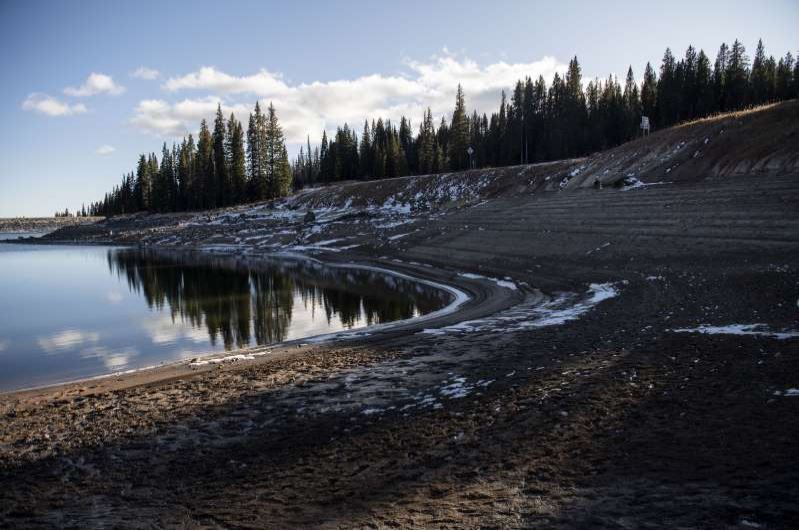 A vast region of the western United States, extending from California, Arizona and New Mexico north to Oregon and Idaho, is in the grips of the first climate change-induced megadrought observed in the past 1,200 years, a study shows. The finding means the phenomenon is no longer a threat for millions to worry about in the future, but is already here.
A vast region of the western United States, extending from California, Arizona and New Mexico north to Oregon and Idaho, is in the grips of the first climate change-induced megadrought observed in the past 1,200 years, a study shows. The finding means the phenomenon is no longer a threat for millions to worry about in the future, but is already here.
The megadrought has emerged while thirsty, expanding cities are on a collision course with the water demands of farmers and with environmental interests, posing nightmare scenarios for water managers in fast-growing states.
A megadrought is broadly defined as a severe drought that occurs across a broad region for a long duration, typically multiple decades.
Unlike historical megadroughts triggered by natural climate cycles, emissions of heat-trapping gases from human activities have contributed to the current one, the study finds. Warming temperatures and increasing evaporation, along with earlier spring snowmelt, have pushed the Southwest into its second-worst drought in more than a millennium of observations.
The study, published in the journal Science on Thursday, compares modern soil moisture data with historical records gleaned from tree rings, and finds that when compared with all droughts seen since the year 800 across western North America, the 19-year drought that began in 2000 and continued through 2018 (this drought is still ongoing, though the study’s data is analyzed through 2018) was worse than almost all other megadroughts in this region.
The researchers, who painstakingly reconstructed soil moisture records from 1,586 tree-ring chronologies to determine drought severity, found only one megadrought that occurred in the late 1500s was more intense.
Historical megadroughts, spanning vast regions and multiple decades, were triggered by natural fluctuations in tropical ocean conditions, such as La Niña, the cyclic cooling of waters in the tropical Pacific.
“The megadrought era seems to be reemerging, but for a different reason than the [past] megadroughts,” said Park Williams, the study’s lead author and a researcher at the Lamont-Doherty Earth Observatory at Columbia University.
Although many areas in the West had a productive wet season in 2019 and some this year, “you can’t go anywhere in the West without having suffered drought on a millennial scale,” Williams said, noting that megadroughts contain relatively wet periods interspersed between parched years.
“I think the important lesson that comes out of this is that climate change is not a future problem,” said Benjamin I. Cook, a NASA climate scientist and co-author of the study. “Climate change is a problem today. The more we look, the more we find this event was worse because of climate change.”
The study is part scientific grunt work, involving sifting through drought records to find past instances of comparable conditions, and part sophisticated sleuthing that employs computer models to determine how climate change is altering the likelihood of an event like this one.
Cook said the researchers analyzed climate models for the region, which showed warming trends and changes in precipitation. They compared soil moisture with and without global warming-induced trends, “and we were able to determine that 30 to 50 percent of the current drought is attributable to climate change.” READ MORE
 Washington state is gearing up for a new challenge this year – fighting wildfires in the time of coronavirus.
Washington state is gearing up for a new challenge this year – fighting wildfires in the time of coronavirus.
